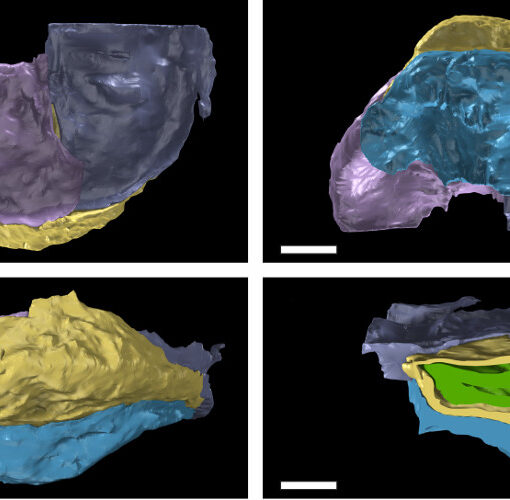Type
Presentation
Event
IPC XIII / IOPC IX (Tokyo, Japan)
Authors
Wickens ZJ, Spencer ART, Hilton J, Sutton MD
Notes
Presenting work completed by Zoe J. Wickens based on her 2011 MPhil from Imperial College London.
Date
2012
Abstract
Seed plants appear in the fossil record during the Upper Devonian, but in many subsequent floral assemblages they are only unequivocally represented by isolated seeds. The study of these seeds is hence of critical importance to studies of the radiation of the clade itself, but previous investigations have been limited by the two-dimensional nature of the majority of materials, and difficulties in visualising the complex three-dimensional nature of others. Our study has utilised new computerised three-dimensional reconstruction methods to re-evaluate anatomically-preserved seeds from the serial-peel collection of Albert Long, which represent the most complete dataset on early seed-plant radiation.
A number of early seed taxa including Genomosperma and Stamnostoma have been restudied using both existing serial-peel and new high-resolution serial-section datasets, reconstructed to 3D models using a custom computer software suite (SPIERS). This work highlights the importance of sample interval, preparatory method and specimen registration; while reconstructions from existing peel datasets are possible, purpose-made serial preparations designed explicitly for three-dimensional reconstruction are considerably more informative. Study of these “virtual fossils” has better constrained the morphology of the specimens investigated, in particular by helping to identify ontogenetic and taphonomic components, and has hence facilitated the rigorous testing of existing developmental and functional models for these plants.

